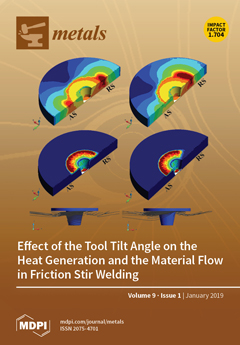To monitor fatigue crack initiation and propagation, and to judge the fatigue damage status of ferromagnetic material, fatigue bending tests of four-point single edge notch bend (SENB4) specimens were carried out. Metal magnetic memory signals were measured during the whole fatigue process. The
[...] Read more.
To monitor fatigue crack initiation and propagation, and to judge the fatigue damage status of ferromagnetic material, fatigue bending tests of four-point single edge notch bend (SENB4) specimens were carried out. Metal magnetic memory signals were measured during the whole fatigue process. The results showed that the fatigue process could be divided into four stages by observing the morphology of the fracture surface. With the increase of fatigue loading cycles, the tangential component of the magnetic field (H
x) and the normal component of the magnetic field (H
y) increased. At the notch H
x presented a “trough” shape and had a maximum value at the midpoint, while H
y at the notch rotated clockwise around the midpoint. Compared with the tangential characteristic parameters, the variation of normal characteristic parameters (i.e., maximum gradient value of H
y (K
y-max) and the variation range of H
y at the notch (∆H
yn), with the fatigue loading cycles are more similar to the variation of fatigue crack length with loading cycles), both K
y-max and ∆H
yn had a good linear relationship with fatigue crack length. Plastic deformation accumulated on both sides of the fatigue crack, and metal magnetic memory (MMM) signals measured from the specimens were able to indicate the location of the fatigue crack and the variation of the fatigue crack length. Furthermore, the distribution of magnetic signals was analyzed according to the theories of stress magnetization and magnetic flux leakage.
Full article





